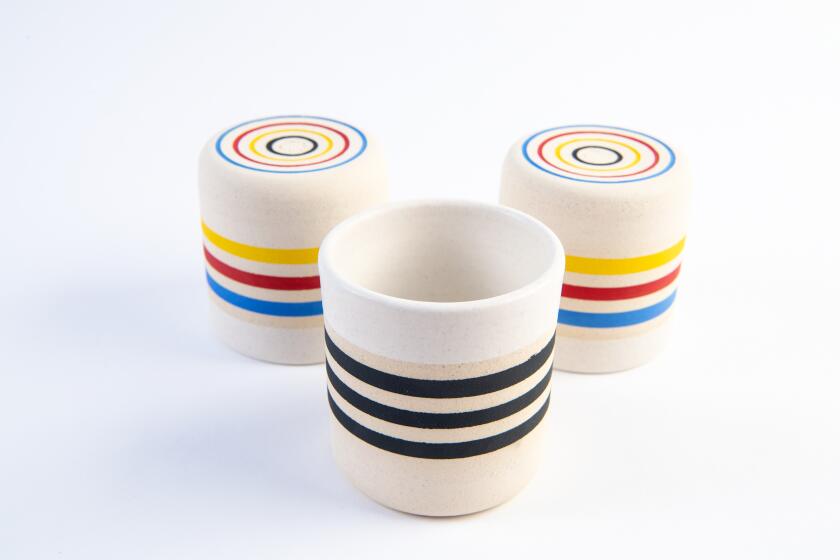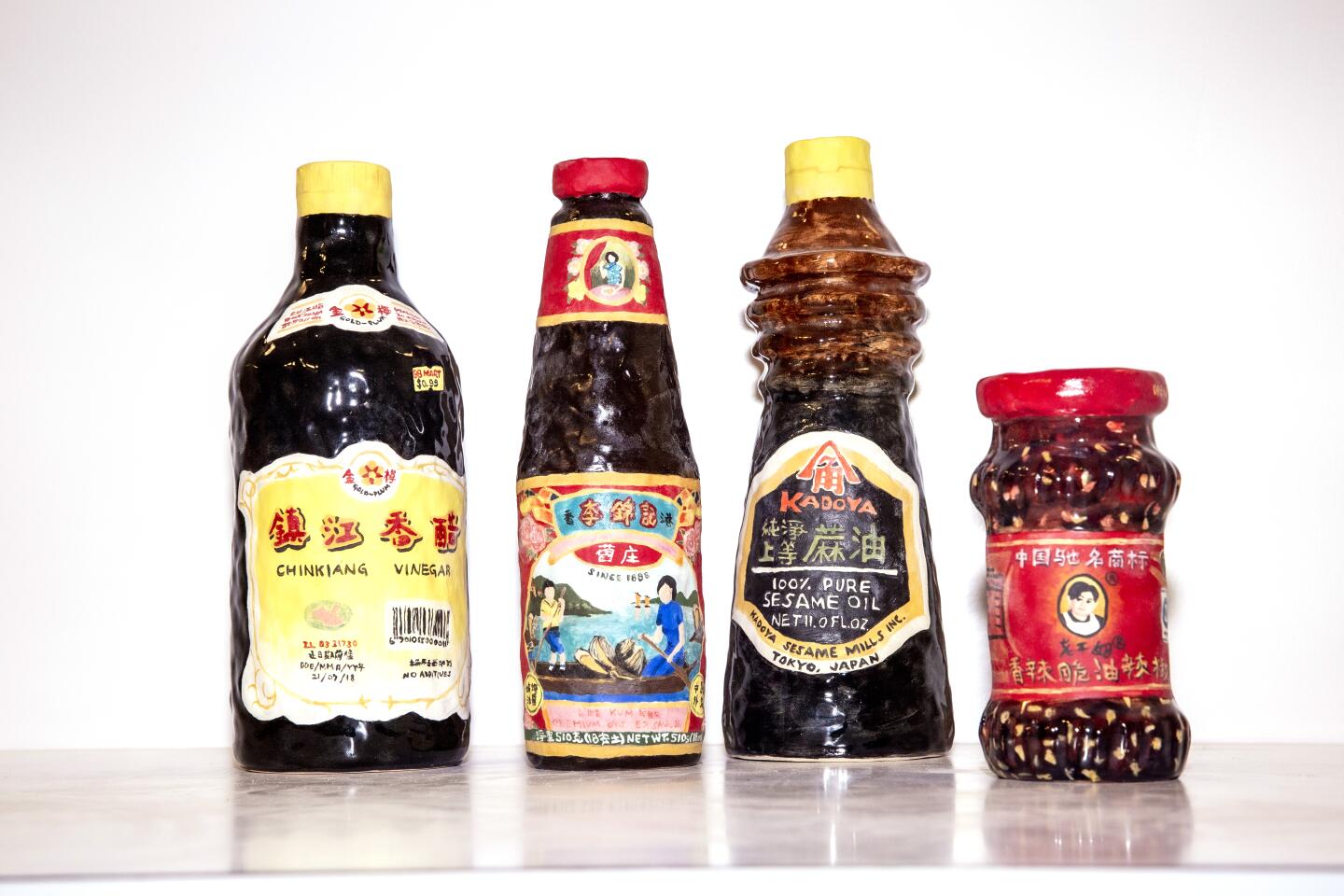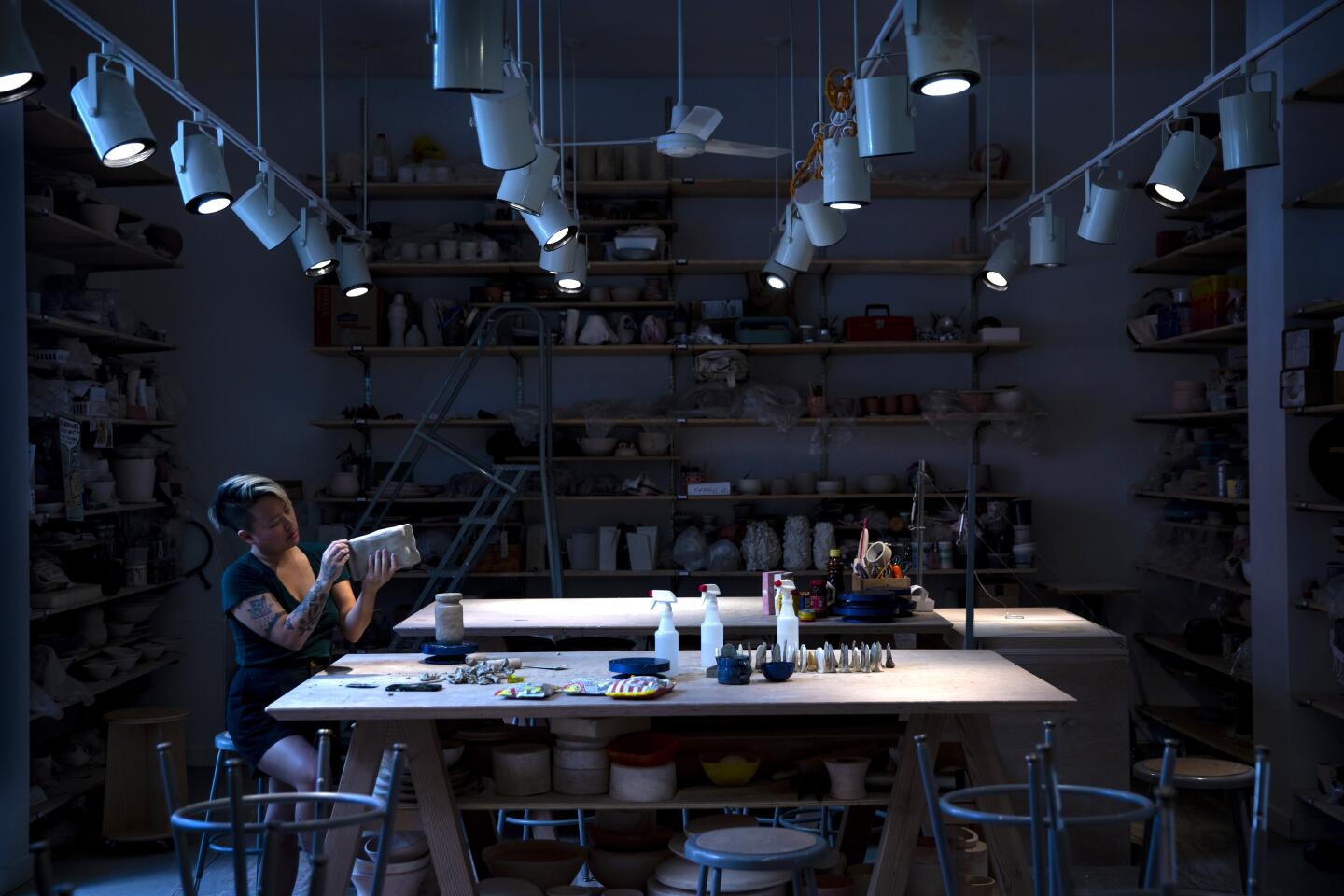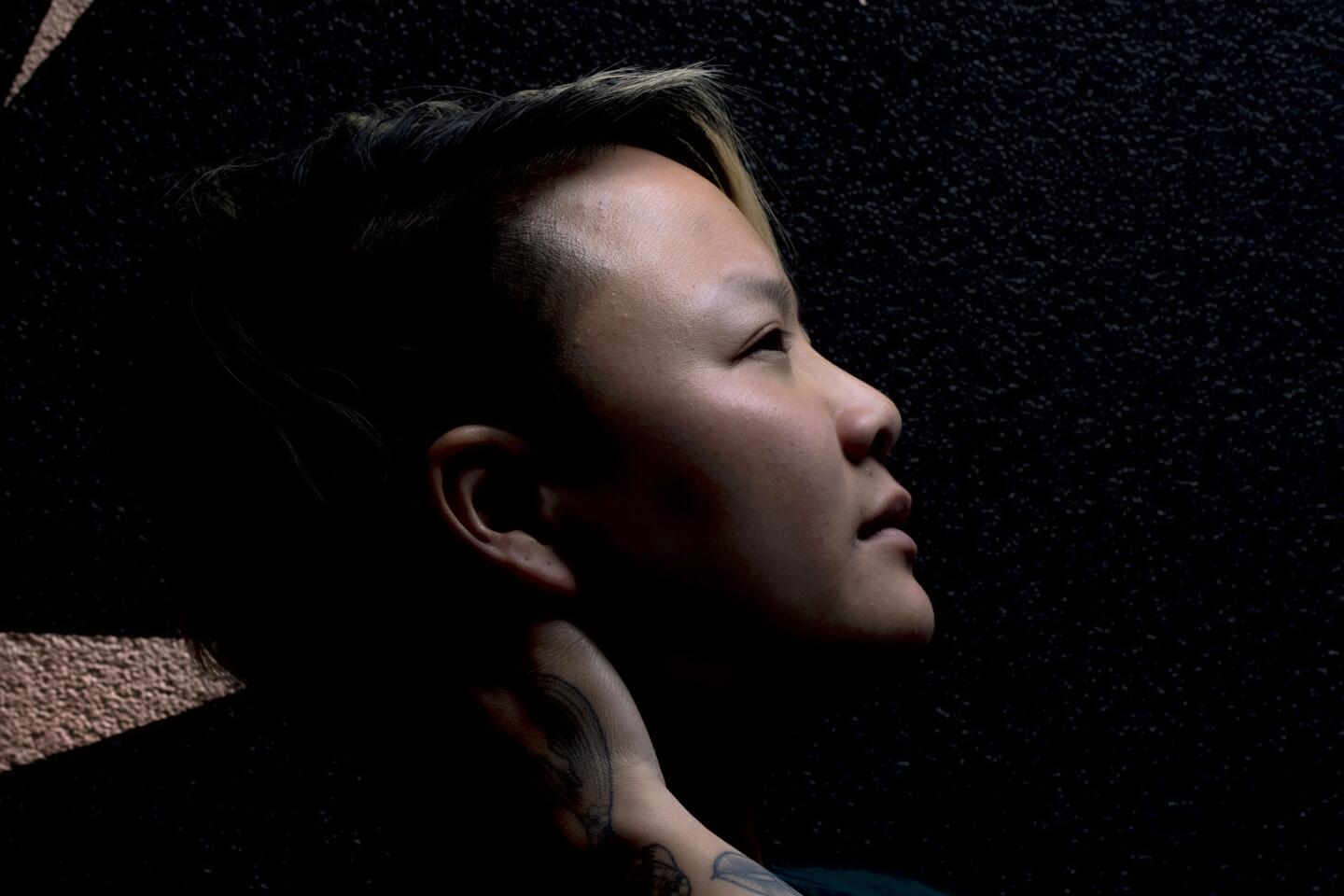Ceramics good enough to eat: Meet the artist who wants to open a grocery store

- Share via
From afar, Stephanie Shih’s most recent ceramic work looks like something pulled from a grocery shelf: a bottle of Chinkiang vinegar, a gallon can of Kikkoman soy sauce, a 50-pound bag of rice. Get closer, and they begin to wiggle. Right up in front of your face, they look like the refraction of a funhouse mirror: What was a rounded glass bottle is textured with a hundred subtle waves, the hand-painted characters and logos on them meticulous but imperfect. Their intimacy is immediate, these everyday domestic items so obviously formed by human hands.
Shih, a 32-year-old ceramicist living and working in Brooklyn, has been working on her series of Asian grocery items since late last year. In 2019, they’ve already appeared — alongside her hand-folded ceramic dumplings — in a solo show at Wieden+Kennedy in Seattle and a group show at Hashimoto Contemporary in San Francisco. In March 2020, she will be a part of an exhibition that highlights the work of first- and second-generation Chinese American ceramic artists at the American Museum of Ceramic Art in Pomona.
For the record:
4:03 p.m. Oct. 1, 2019A previous version of this article inaccurately described an exhibition that will feature Stephanie Shih; it also incorrectly called the American Museum of Ceramic Art in Pomona the Museum of Ceramic Art.
We’ve made it to Peak Ceramics: All your friends are taking wheel-throwing classes, Brutalist planters have become status symbols, and every other upscale restaurant has commissioned its own run of handmade plates and sconces.
“There is so much history and idolization of Asian ceramics within the broader ceramics community, which is a really white space,” she says. “So I started thinking, what if I made work that was inspired by Asian culture — but I’m actually Asian? What would that even look like?”
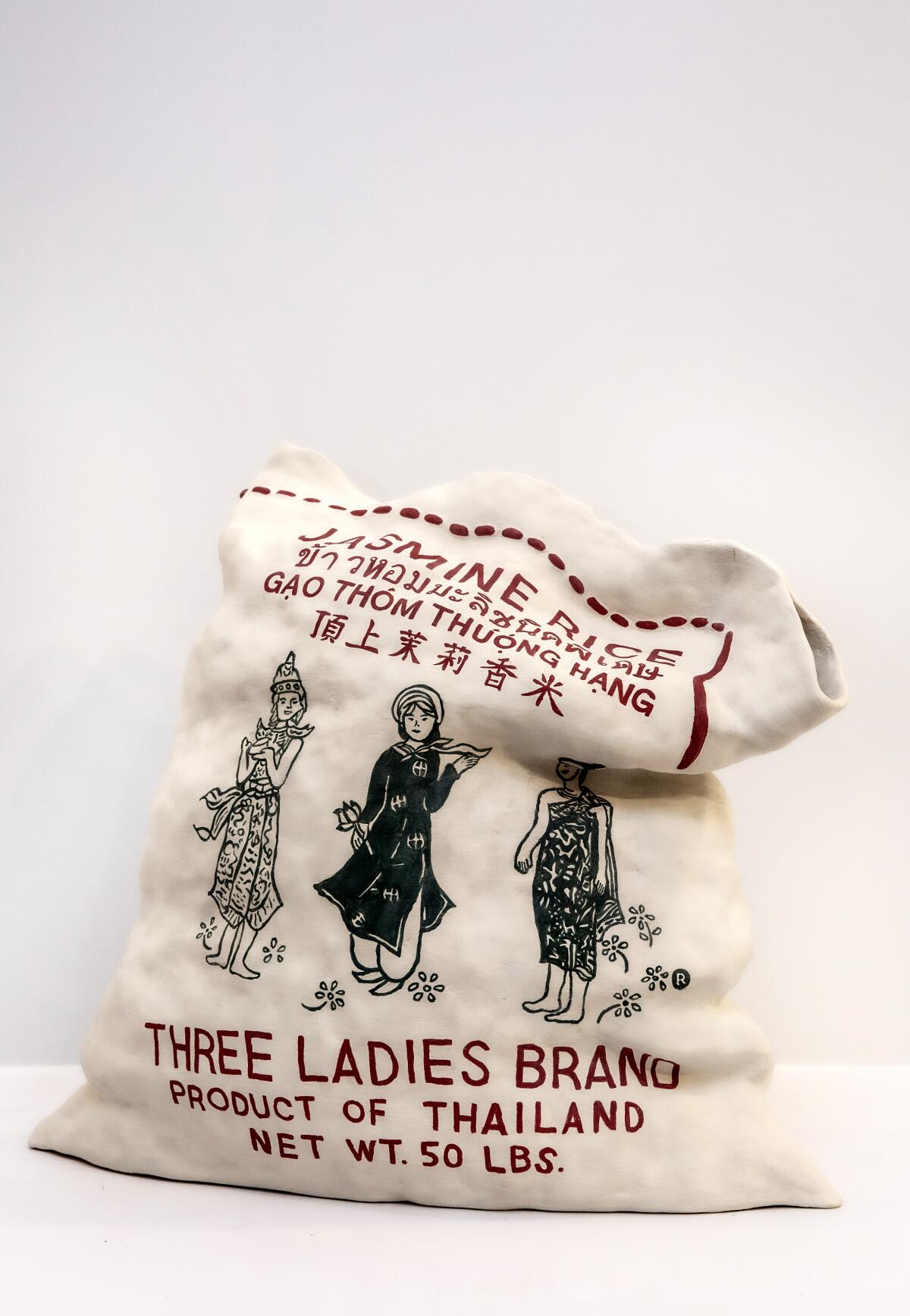
Her master plan is to someday build out a small grocery store filled exclusively with her ceramic bottles and bags and packets of instant noodles. But unlike other artists concerned with groceries — Andy Warhol, or felt artist Lucy Sparrow — Shih is less interested in what it means to make mass-produced items by hand, and more interested in the feelings the process can evoke.
“What I do is more about nostalgia — it’s not about the commercial product,” Shih explains. “When I was making the dumplings, I realized that folding the dumplings was the art.”
Those dumplings were the gateway ceramics to her bigger work. Shih half-jokingly said she first made them because she wanted to “capitalize on white people’s fetishization of me” by selling them ceramic dumplings. But the response from other Asians and Asian Americans on Instagram was far louder than any joke could be, and the dumplings planted the seed that would morph into an idea for a ceramics grocery store. (Shih’s dumplings start at $108; commissions at $400; bigger pieces fetch as much as $3,000.)
“I saw that the work itself was creating space for this dialogue that literally wasn’t there before,” she says. “It was like little friend catchers: I put them out into the world, and people shared such personal stories with me. Like, people talking about their dead mothers? Just because I made some dumplings? People just felt so connected to it.”
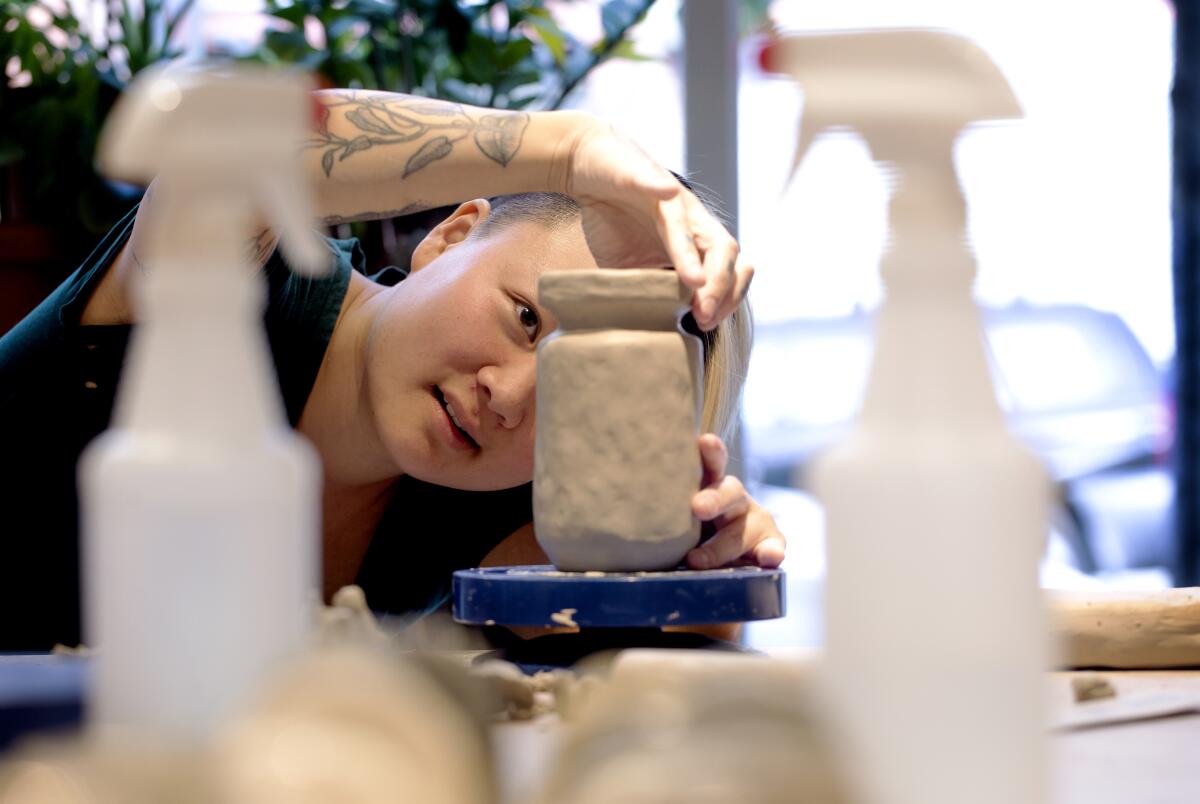
That connection has become a central theme in Shih’s artwork. On Instagram, she polls her followers on which oyster sauce their moms bought, or which kind of rice they ate at home as kids. And her work’s gentle imprecision reflects and refracts the specific memories of a wide-ranging diaspora.
It was like little friend catchers: I put them out into the world, and people shared such personal stories with me. Like, people talking about their dead mothers? Just because I made some dumplings? People just felt so connected to it.
— Stephanie Shih
Food’s ability to unite communities and channel nostalgia has been well-documented; Shih argues that for Asian communities, it plays an outsize role in family life.
“We used to always drive two towns over when I was growing up to this little place called Oriental Food,” she says of her childhood in Princeton Junction, N.J. “That was the only place that we got our groceries, and they would go to New York twice a week to get fresh rice noodles, and the cuts of meat they didn’t sell at the white supermarket.”
Shih wanted to go to art school for college but her parents wouldn’t abide that plan. When a back injury sidelined her from climbing four years ago, she signed up for a few wheel-throwing classes to fill the hobby-sized hole in her life.
But she soon found out that hunching over the wheel made her back pain even worse. Hand-building — that is, working with clay without using the wheel — became the only feasible option. She began using underglaze to paint nature-based motifs on platters, like a fish in a color gradient that made it look iridescent—with these pieces, she rediscovered her own talent for painting.

As a medium, underglaze can be finicky — certain colors can bubble or streak, and mixing them takes a careful eye and a lot of testing. Shih blends and mixes them so confidently you’d think she was working in acrylic: A central image on a bottle of Lee Kum Kee oyster sauce looks like it could be blown up into a large-scale pastoral painting and not lose any detail in the process.
Her first solo show, put on in a warehouse in the Brooklyn Navy Yard, featured a number of large painted platters, as well as a collection of white glossy vases inspired by ancient Chinese forms, with that same dimpled exterior.
“That was the first time I was like, oh, my work is about this sense of home,” Shih remembers. “In hindsight, I can see that it’s all about my own connection to my heritage.”
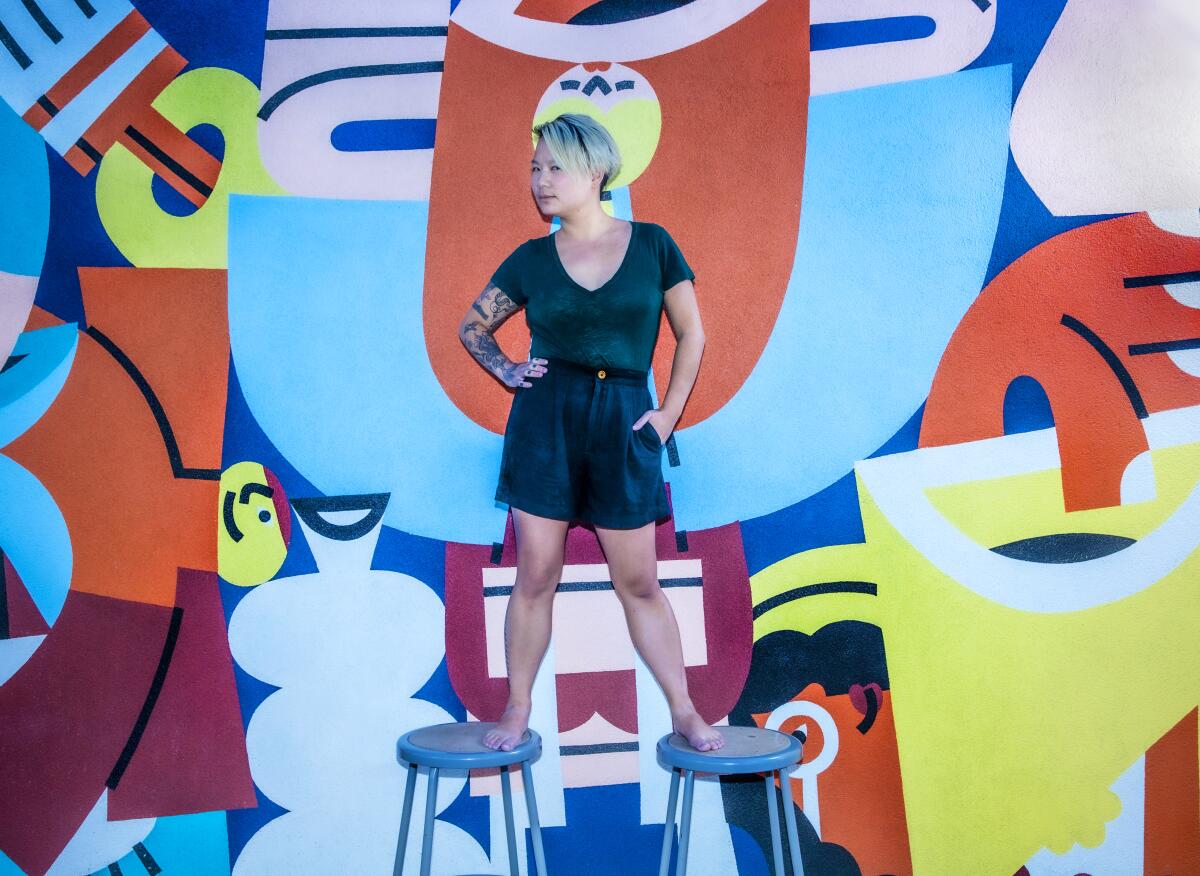
Recently, Shih has begun taking commissions, creating grocery items pulled from other people’s memories. An early buyer was Robert Bredvad, a Brooklyn-based photographer. “While I understood the cultural nostalgia that underpinned Stephanie’s grocery work, it wasn’t until I saw my own finished commission — a can of Ranch Style Beans, a staple in any Texas pantry — that I understood more clearly all the reactions that I’d seen Asian Americans have toward her work,” Bredvad said. “For me, it’s alternatively a bit humorous and very endearing to see this symbol of your home and your youth once again around the house, now holding pens and pencils instead of Southwestern spiced baked beans.”
More to Read
Eat your way across L.A.
Get our weekly Tasting Notes newsletter for reviews, news and more.
You may occasionally receive promotional content from the Los Angeles Times.
